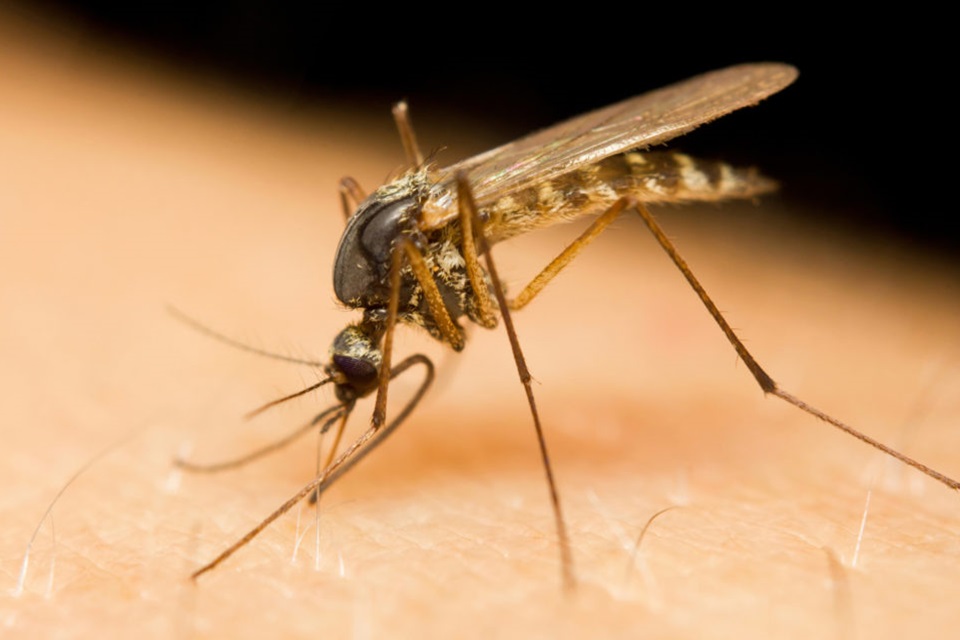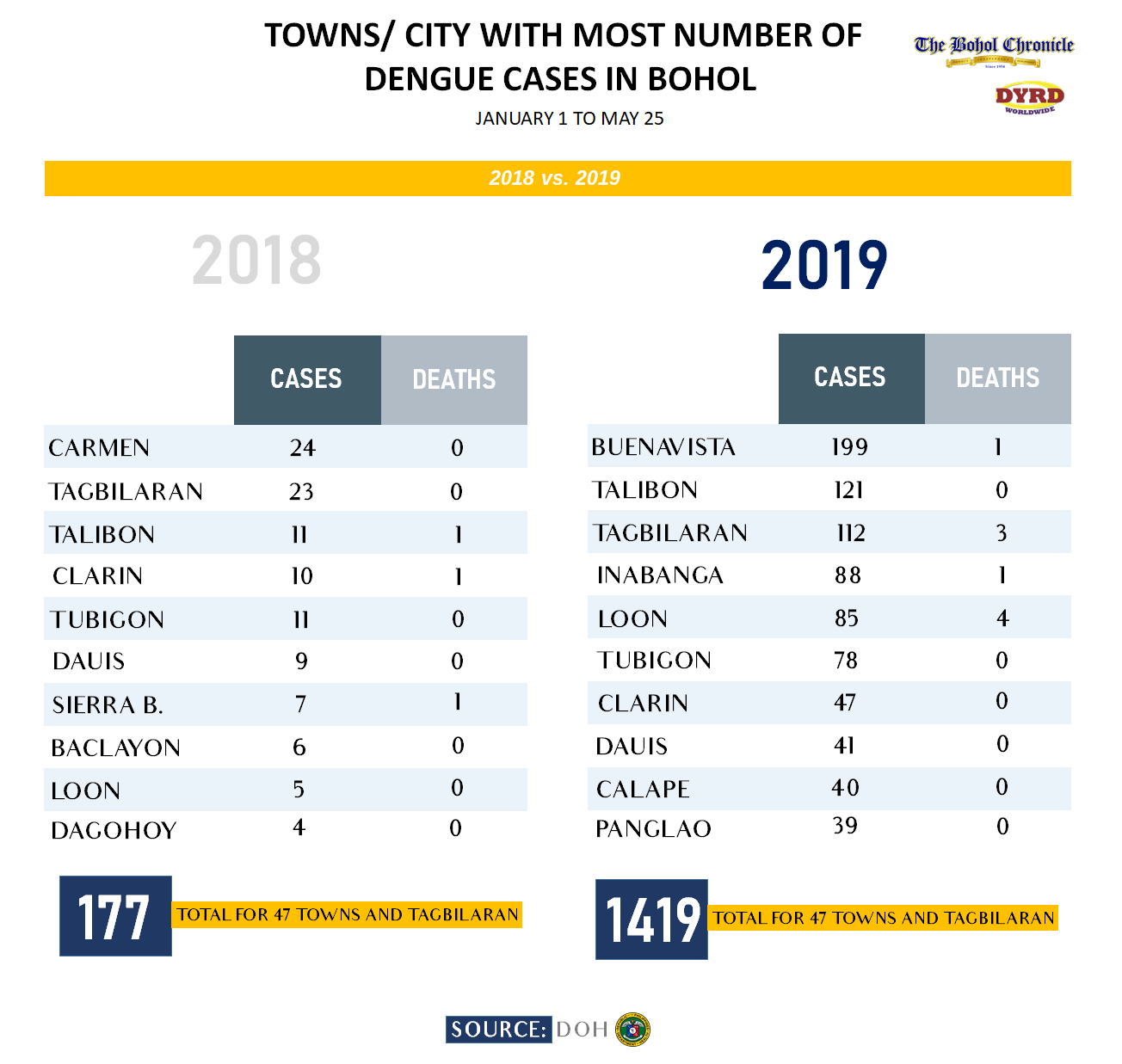The number of dengue cases in Bohol from January 1 to May 25, 2019 skyrocketed to 1,419 from just 177 in the same period last year, marking a whopping 702 percent increase, according to data released by the Department of Health-Regional Epidemiology Surveillance Unit (DOH-RESU) 7 on Monday.
According to the RESU, 11 succumbed to complications of the mosquito-borne disease during the almost five-month span in 2019, up from just three deaths recorded in the same period last year.
Most of the cases were recorded in Buenavista town which had 199 cases and one death. Talibon, Tagbilaran City, Inabanga and Loon followed as the top towns with the most number of cases with 121, 112, 88, and 85 cases, respectively.
Most of those affected by the disease in the entire province were children in the six-10 age bracket at 25.7 percent, the RESU said.
According to Dr. Reymoses Cabagnot, chief of the Provincial Health Office (PHO), the DOH has recommended for an outbreak to be declared in at least 12 towns in Bohol.
However, none have complied and made the declaration.
“Last year, dihay lima ka lungsod na gi-rekomendar sa DOH nga mo-declare og outbreak pero way bisa’g usa na mi deklarar. Agtong mga duha ka buwang niagi, 12 na ka lungsod ang gi rekomendar sa DOH na padeklarahon og outbreak, wa gihapon bisa’g usa mideklarar. Kanang 12, roughly 25 percent na na sa tanang LGUs sa ato,” said Cabagnot.
The PHO does not have the authority to order LGUs (local government unit) to declare an outbreak,” he added.
Cabagnot said that there is a big possibility that the number of dengue cases would have not soared as much if the towns had declared an outbreak, noting that the LGU would have access to emergency funds if such declaration was made.
“Dunay silay access sa emergency funds. Kada lungsod dunay may ngana. So kung unsy gusto nilang paliton nga ipangontra nato sa dengue, mas dali sila makapalit kay emergency man ang nature kay outbreak na gud ang sitwasyon. Mao ng makapalit sila dayon kaysa mo agi pa ka og bidding, pwede e-question pud ka sa COA,” he said.
Cabagnot said that an outbreak may be declared in Bohol if more than half of the towns in the province are deemed heavily affected by the disease.
The PHO meanwhile has acquired 11 misting machines to spray insecticide in areas that may have dengue-carrying mosquitoes.
However, these have been not enough to cover the needs of all the towns.
“Duhay mo gamit ani [machines], hospital og kadtong mga kalungsuran na dunay tag-as og kaso sa dengue.Sa hospital, gamit ni nila sa pagpanghinlo sa ilang operating room, delivery room ug sa ilang mga laboratories. Unya karon mura’g nanggi-ilog ni sila,” said Cabagnot.
Cabagnot said that while there have been no other measures suggested by the DOH to combat dengue, individuals should continue to practice the department’s 4S strategy against the dreaded disease which involves searching and destroying mosquito breeding places; securing self-protection; seeking early consultation; and supporting fogging and spraying in hotspot places.
18-year high
In 2018, the number of dengue cases in Bohol soared to 5,249, the highest in at least 18 years based on data from the RESU and PHO.
The figure was higher by a staggering rate of 408 percent compared to the 1,032 cases recorded in 2017.
According to the RESU, 54 died due to the dreaded mosquito-borne disease in 2018.
The RESU in its data for 2018 indicated that it recorded 1,616 cases in 2014; 2,872 in 2015 and 2,878 in 2016.
In previous reports by the Chronicle, the PHO reported 3,590 cases in 2013; 2,404 in 2012; 147 in 2011; 2,700 in 2010; 623 in 2009; 2,102 in 2008; 1,679 in 2007; 231 in 2006; 1,113 in 2005; 283 in 2004; 365 in 2003; 289 in 2002; 712 in 2001; and 70 in 2000.
Department of Health (DOH) 7 medical officer Dr. Ronald Buscato however earlier noted that the number of dengue cases has been on an uptrend at a national scale.
“Historically, every two years man gud mo-saka ang cases. Actually challenge sad na sa World Health Organization namo nga ‘please try to stop this trend’,” said Buscato in an earlier interview.
He said that “aggressive” measures such as the use of chemicals and misting operations should be implemented to combat the viral disease as 2019 could be the dengue “epidemic year” for the Philippines based on historical trend.


